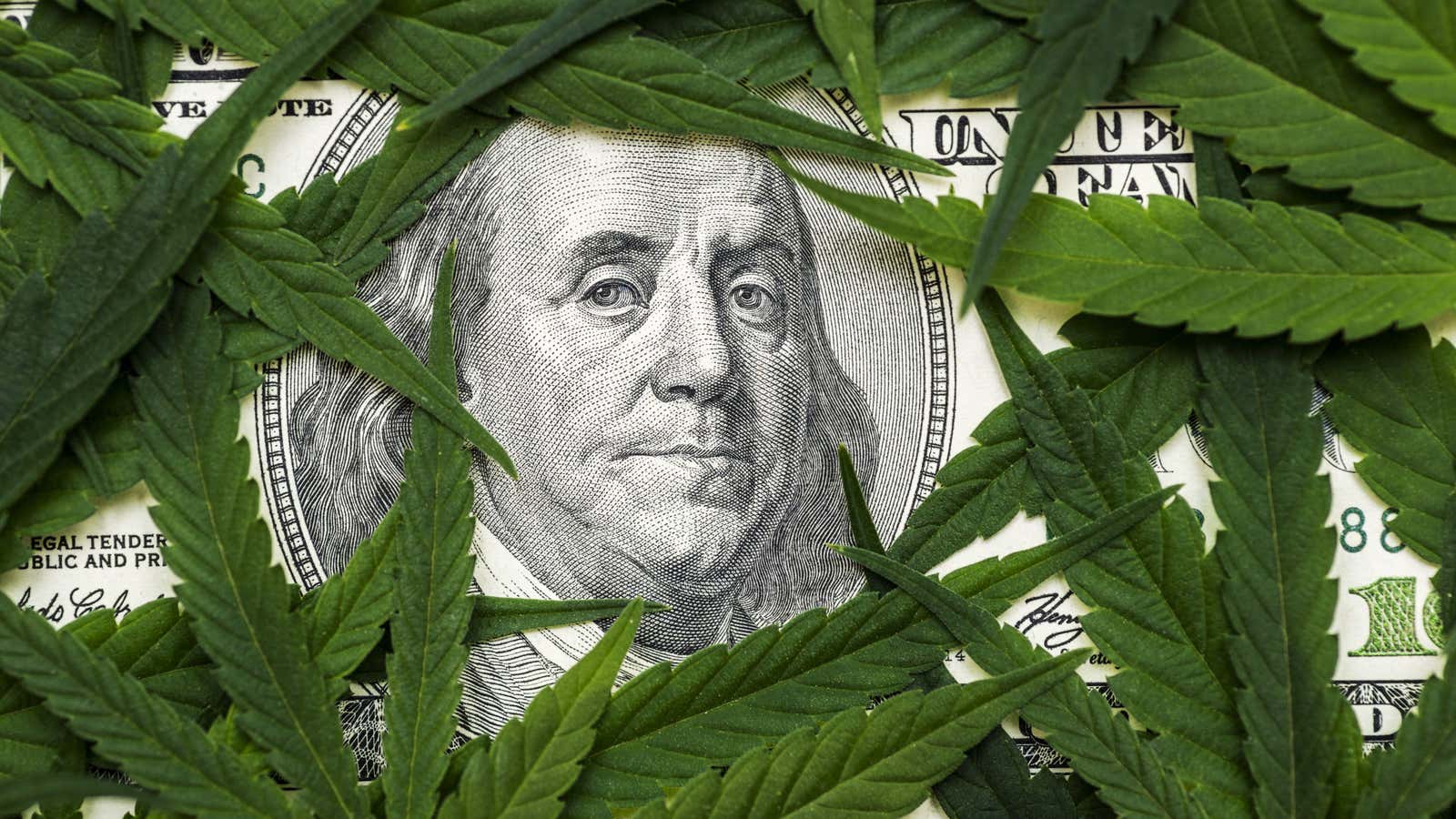In April 2019, the North American cannabis industry was riding high. The stock market value of public cannabis companies had tripled over the last year and a half. Investors observed legalization sweeping the US, and saw the opportunity to get in on the ground floor of an industry projected to become worth tens of billions of dollars.
Over the next year, the cannabis bubble would burst. For many companies it would be a full-on disaster. Of the 40 publicly-listed cannabis companies in North America worth at least $40 million, only seven saw their stock market valuation grow from April 2019 to July 2020. Of those 40 companies, 24 lost more than half their value, and 13 were nearly wiped out, losing nearly 80% of their valuations. Most of this decline happened before the coronavirus sent the global economy into a tailspin. (Our selection of companies comes from the Marijuana Index, which tracks the stocks of leading public cannabis companies.)
None of the top three performers since April 2019 are plant-touching THC companies. Rather, they are an equipment company (GrowGeneration), a company that makes CBD products like sleep aids and dog treats (cbdMD), and a firm that finds real estate for cannabis companies (Innovative Industrial Properties).

Historically, cannabis companies have lost money, but until recently that didn’t stop their stocks from soaring. Quartz analyzed the finances of the 13 cannabis companies in the Marijuana Index that have been public since the start of 2017 and found that, though their earnings before interest, taxes, depreciation, and amortization (EBITDA) were negative in 2017 and 2018, their market values still saw large gains. It was only in 2019 that these losses actually turned investors against these companies, with almost $500 million in losses leading to a $4.4 billion drop in their aggregate valuations.

The huge stock market losses of these companies came despite their businesses growing. The revenues of these 13 jumped from less than $1.6 billion in 2018 to more than $4 billion in 2019, and analyst estimates suggest they should climb above $6 billion in 2020. It’s just that expenses soared even more than revenue.
The revenue growth of the public cannabis companies in the Index are outpacing the overall growth of the North American cannabis market. This suggests that although these companies are maintaining their market shares, expectations in the sector have declined.

Not every cannabis operator has seen its market value plummet though.
While high-profile companies like MedMen and Tilray went bust, Curaleaf and Trulieve were two of the few to hold steady over the past year. Both Curaleaf, worth over $4 billion in market capitalization, and Trulieve, about $1.8 billion, have grown by focusing on less saturated states than the splashy California and Colorado markets. Curaleaf is currently focused on “Arizona and Nevada, and east,” says CEO Joe Lusardi, while Trulieve has 51 of its 53 stores in Florida.
Both Curaleaf and Trulieve also do something unusual in the cannabis industry: They make a profit. After losing $10 million in 2018, Curaleaf earned over $26 million in profit in 2019, and analysts expect it to make more than $100 million profit in 2020, following a merger that made it arguably the world’s largest cannabis operator. Trulieve profited $46 million in 2018 and $133 million in 2019, with profits expected to grow in 2020.
Cannabis investors are now looking for profitability, not just hope, and Curaleaf and Trulieve have been two of the few big players to provide that.
